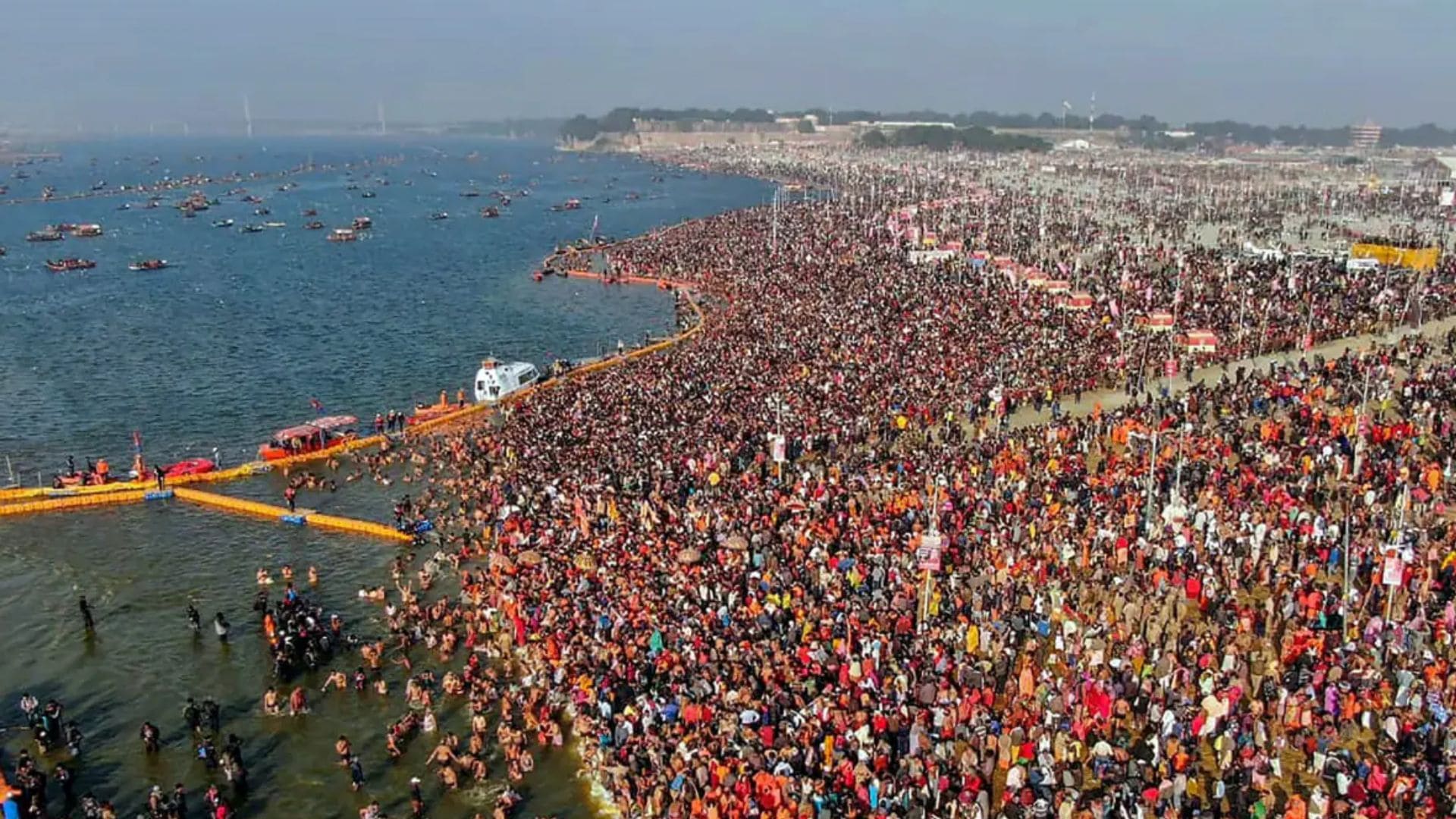
Kumbh Mela: The Sacred Festival of Spiritual Purity and Liberation
Kumbha Mela is held in Prayagraj every twelve years and begins on Makar Sankranti, the day when the sun and moon enter Capricorn and Jupiter enters Aries. It is said that the passages from earth to planets of higher dimensions are open at this time, and so, the highly purified souls can easily go through these passages to reach the enlightened world.
Due to the spiritual, cultural and historical significance of the Ganges, kumbh mela in prayag attracts the most devotees. As prayag is the place of confluence of the three sacred rivers Ganga, Yamuna and saraswati, This Confluence (Triveni Sangam') is said to be the most sacred of all religious destinations in India.
Purity of the body + Purity of the mind + Purity in prayer = Purity of the soul. So, kumbh mela or any celebration in Hinduism cannot be initiated without bathing or purifying the soul.
Additional Reason behind bathing & the grand-scale celebration of kumbh-mela is the age old belief that the bathing at the place where the nectar fall on earth from the planet of deities would absolve all sins and the devotee would attain moksha (liberation). It is this faith and belief that the millions of devotees from all across the world attend the kumbh mela to take a sacred dip in the ganges river.
Despite of Ganges water being polluted and dirty, devotee's dip into the ganges river unbothered as Moksha (liberation) is the only thing that is ruling their mind. Bathing, which is locally known as shahi snan, is the main ritual of kumbh mela. So As soon as the sun rises, different group of sadhus first move on procession towards the sacred gangas waters. It is believed that during the festival of kumbh mela, climatic and planetary position align in such a way that the waters in the river situated in these cities turns into the nectar of immortality, thus giving devotes an opportunity to bathe in the essence of purity, auspiciousness, and immortality. As bathing in River Ganga has unique healing benefits, devotees, gurus, sadhus and Saints from across the world bathe in Kumbh Mela. Bathing in sacred ganga river during the kumbh mela festival is considered to be equivalent of performing 1,000 Ashvamedha Yadnyas, 100 Vajapeya Yadnyas and 100,000 Pradakshinas (Circumambulations). River Ganga is rich in minerals and has a special kind bacteria that destroys all the impurities. This is why despite of being polluted, bathing in river Ganga has not produced any kind of disease to even one of the million devotees bathing here. On the contrary, bathing in river Ganga is known to be the cure of many serious illness/diseases.
The total number of devotees expected to attend kumbh mela this year is estimated to be 200 million out of which 2 million are foreigners.
Similar Stories
The swastika is an ancient symbol representing good fortune, well-being, and divine protection, especially in Hinduism. Originating in the Neolithic Period, it embodies the essence of life, cultural heritage, and auspicious energy. In Hindu rites and festivals, it is seen as a symbol of protection, strength, and positivity. Explore the cultural and religious importance of the swastika, its origins, and its misuse during the Nazi era.
Discover the Maha Kumbh Mela 2025 in Prayagraj, Uttar Pradesh, from January 14 to February 26. Explore its rich spiritual significance, major bathing dates, cultural events, and travel tips for an unforgettable experience.
The Maha Kumbh Mela 2025 will take place in Prayagraj, Uttar Pradesh, at the Triveni Sangam, where the Ganga, Yamuna, and Saraswati rivers converge. Starting from January 14, coinciding with Makar Sankranti, this sacred festival will draw millions of pilgrims for spiritual purification through ritual bathing. Key dates include Makar Sankranti (First Shahi Snan) on January 14, Mauni Amavasya (Second Shahi Snan) on January 29, Basant Panchami (Third Shahi Snan) on February 3, and Maha Shivratr ...
Astrology, Mantras, Events, Stories & More.
